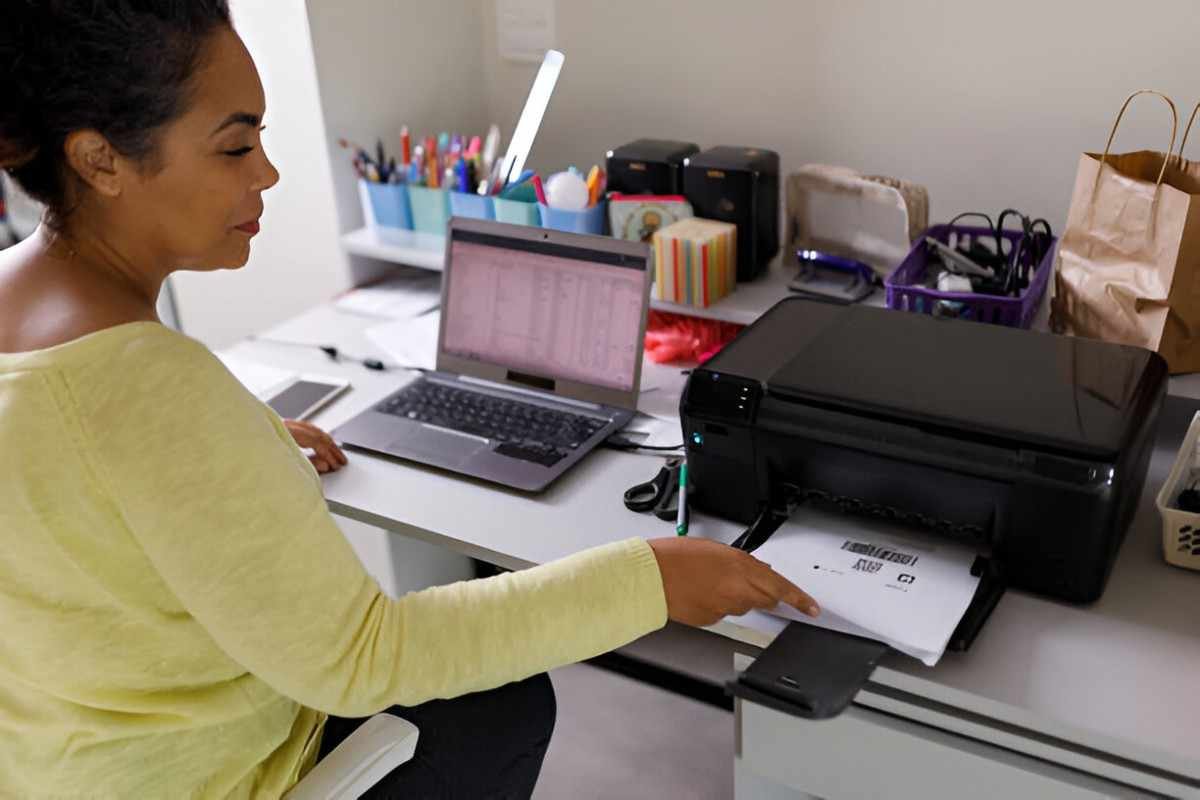When I first set up my home office, one of the most essential decisions I had to make was choosing the right printer. After all, a printer is something I would be using daily for printing documents, scanning paperwork, and sometimes even printing photos. The range of options available today can be overwhelming, so I decided to put together this guide to help you navigate the decision-making process.
In this guide, I’ll explore the key features you should consider when buying a home office printer, compare some of the top models available, and offer advice based on my own experiences. Whether you need a basic printer for occasional use or something more advanced for high-volume printing, I hope this guide will point you in the right direction.
Table of Contents
What to Look for in a Home Office Printer
Choosing the best home office printer depends on several factors, including your specific needs, budget, and available space. Below are the key features to consider:
1. Printer Type: Inkjet vs. Laser
The first decision I had to make was whether to go for an inkjet or a laser printer. Each has its pros and cons, so let’s break them down:
- Inkjet Printers: These printers are ideal for printing photos and high-quality color documents. They work by spraying tiny droplets of ink onto paper. However, inkjet printers tend to have higher running costs because ink cartridges can be expensive.
- Laser Printers: Laser printers use a laser beam to draw text and images on a drum, which then transfers the image to the paper. They’re typically faster than inkjets, more cost-efficient for printing large volumes, and excellent for printing black-and-white text. However, they generally don’t handle color printing as well as inkjets.
2. Printing Speed
Speed is a crucial factor, especially if you plan to print multiple pages at once. I always look for printers with a high page-per-minute (PPM) rate. While this feature may not matter if you only need to print a few pages, it can make a big difference if you’re printing reports, invoices, or presentations regularly.
3. Print Quality
The print quality is essential, especially for professional documents. Most printers will offer resolution in dots per inch (DPI), and higher DPI generally means better print quality. For text-heavy documents, DPI is less important, but if you plan to print images or graphics, opt for a printer with a higher DPI rating.
4. Connectivity
In my opinion, wireless connectivity is one of the most convenient features in a modern home office printer. I can print from my laptop, phone, or tablet without needing to be physically connected. Wi-Fi, Bluetooth, and Ethernet are the most common ways to connect printers to your devices. Make sure your printer supports the connection methods that suit your devices.
5. Multi-function Features
A multi-function printer (MFP) can save both space and money, as it combines multiple devices into one. These usually include a printer, scanner, copier, and sometimes even a fax machine. If you need any of these additional functions, an MFP could be an excellent choice.
6. Cost of Ownership
The upfront cost of a printer is one thing, but it’s important to consider the ongoing expenses like ink or toner. Inkjet printers tend to have lower initial costs but higher running costs, while laser printers are more expensive upfront but cheaper to maintain. If you plan on doing a lot of printing, the running costs will add up, so it’s worth checking out reviews on how cost-effective a printer is in the long run.
Comparison of the Best Home Office Printers
To help you further narrow down your choices, I’ve put together a comparison table of some of the best home office printers currently available on the market. I’ve taken into account various factors such as price, print quality, speed, and cost of ownership.
| Printer Model | Type | Print Speed (PPM) | Print Quality (DPI) | Connectivity | Multi-function | Price Range |
|---|---|---|---|---|---|---|
| HP OfficeJet Pro 9015 | Inkjet | 22 | 4800 x 1200 | Wi-Fi, Bluetooth, Ethernet | Yes | $$ |
| Brother HL-L2350DW | Laser | 32 | 2400 x 600 | Wi-Fi, Ethernet | No | $ |
| Canon PIXMA TS8320 | Inkjet | 15 | 4800 x 1200 | Wi-Fi, Bluetooth | Yes | $$ |
| Epson EcoTank ET-2720 | Inkjet | 10 | 5760 x 1440 | Wi-Fi | Yes | $$$$ |
| Xerox Phaser 3260/DNI | Laser | 28 | 1200 x 1200 | Wi-Fi, Ethernet | No | $$ |
HP OfficeJet Pro 9015
This all-in-one inkjet printer is a great choice for anyone who needs high-quality color prints and the flexibility of wireless connectivity. It’s fast, offering up to 22 pages per minute (PPM) in black-and-white, and it supports printing from a variety of devices. Its relatively low cost of ownership makes it an excellent option for small businesses or home offices with moderate printing needs.
Brother HL-L2350DW
If you’re primarily printing text-heavy documents and need a laser printer, the Brother HL-L2350DW is a great option. It prints quickly (up to 32 PPM), is easy to set up, and offers wireless connectivity. Its print quality is solid, and it’s inexpensive to maintain in the long run, making it ideal for someone who prints frequently but doesn’t need color prints.
Canon PIXMA TS8320
If you’re looking for a printer that handles both documents and photos well, the Canon PIXMA TS8320 is a good choice. It’s an inkjet printer, so it excels at producing vibrant, high-quality prints. It also has wireless capabilities and a user-friendly touchscreen interface. It may not be the fastest, but its overall performance and print quality make it worth the price.
Epson EcoTank ET-2720
For those who want a printer with incredibly low running costs, the Epson EcoTank ET-2720 is hard to beat. The EcoTank system uses refillable ink tanks instead of cartridges, which significantly reduces the cost per print. It’s perfect for people who do a lot of printing and want to keep ongoing expenses low. However, it’s a bit slower than some other options, and it may be overkill for someone who only prints occasionally.
Xerox Phaser 3260/DNI
The Xerox Phaser 3260 is a compact and affordable laser printer with great speed and print quality. It’s designed for small spaces, making it an excellent choice for a home office where space is limited. It’s a no-frills machine, focusing on reliable black-and-white printing, and it’s fast enough for most tasks.
Choosing the Right Printer for Your Needs
When selecting a printer, there are a few things I always keep in mind based on my personal experience:
- Frequency of Use: If you print regularly or in large quantities, a laser printer will likely be the best option due to its lower cost per page. If you only print occasionally, an inkjet printer should suffice.
- Color Printing Needs: If you need vibrant, high-quality color prints, inkjet printers like the Canon PIXMA TS8320 or HP OfficeJet Pro 9015 are ideal. However, if you mostly print text, a monochrome laser printer like the Brother HL-L2350DW is a better choice.
- Space and Budget: If space is a concern, choose a compact model like the Xerox Phaser 3260 or a multi-function printer to reduce clutter. For a tighter budget, look for budget-friendly models like the Brother HL-L2350DW or Epson EcoTank ET-2720.
Conclusion
After going through various models and considering my own needs, I believe there’s no single “best” printer for everyone. It all depends on what you need it for, your budget, and how much you print. Whether you’re looking for something affordable, high-quality, or capable of handling large print jobs, there’s a printer out there that will fit your requirements. My advice is to carefully consider your printing habits, check out reviews, and test out the printer if possible before making a final decision.
Ultimately, the right printer can make a big difference in productivity and the overall efficiency of your home office. Hopefully, this guide has given you the information you need to make a more informed choice.





